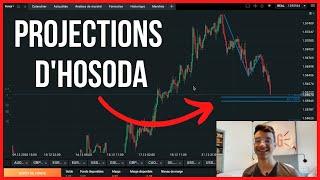The grocery industry has thrived during the Covid-19 pandemic. Unless, that is, you are Whole Foods Market, the upscale chain acquired three years ago by Amazon.
Whole Foods has tweaked store hours in some markets—and even temporarily shut down some locations—to make more room for online grocery delivery, but crowding has become a frequent complaint of customers, one that has only grown louder as the pandemic limited store capacity.
Trips to Whole Foods in September were down 25% from a year earlier, according to Placer.ai, which tallies retail foot traffic from some 30 million mobile devices. Some of the decline is due to consumers consolidating shopping trips and buying more groceries online, but the traffic decline at Whole Foods is much steeper than at Walmart Inc., Kroger Co. and Trader Joe’s. Visits to Albertsons Cos., meanwhile, actually increased last month, compared with a year ago. And though Earnest Research estimates that Whole Foods sales (including online) rose by as much as 10% during the pandemic, some rivals are posting twice the gains.
“Everyone is buying more everywhere, but total customers are actually down for Whole Foods,” Michael Maloof, who tracks consumer habits for Earnest Research, said in a telephone interview. “Whole Foods is in a uniquely horrible place.”
Amazon doesn’t break out Whole Foods sales, so getting a complete picture of the chain’s travails is difficult. But few grocers were more awkwardly positioned for the pandemic, analysts say. The stores were rarely a one-stop destination before the outbreak even for fans. The company expanded its prepared meals sections for office workers seeking lunch or dinner on the go, but now those customers are homebound. And Whole Foods shoppers who have time to visit stores often confront long lines and aisles crowded with gig workers paid to fetch online orders.
Meanwhile, despite expectations that the world’s largest e-commerce company would use Whole Foods to re-invent food shopping, Amazon has opted to open a separate chain called Amazon Fresh. Some analysts have even soured on the $13.7 billion acquisition. Bill Bishop, a longtime grocery industry consultant and founder of the consulting firm Brick meets Click, says the deal was probably well-thought out at the time but in retrospect was a “strategic error.”
In an emailed statement, a Whole Foods spokeswoman said: “Whole Foods Market continues to grow, and we strongly dispute this portrayal of the health of our business. In addition to offering a safe in-store shopping experience, we're proud we've been able to rapidly expand grocery delivery and pickup to meet the needs of customers.” Presented with the data points used in this story, she didn’t specify which, if any, were inaccurate reflections of the grocer’s business. The spokeswoman also declined to discuss the company’s sales performance. Chief Executive Officer John Mackey has said in recent interviews that sales of meats and other categories surged during the pandemic on buying from shoppers cooking at home.
Subscribe to our YouTube channel: https://bit.ly/2TwO8Gm
QUICKTAKE ON SOCIAL:
Follow QuickTake on Twitter: twitter.com/quicktake
Like QuickTake on Facebook: facebook.com/quicktake
Follow QuickTake on Instagram: instagram.com/quicktake
Subscribe to our newsletter: https://bit.ly/2FJ0oQZ
Email us at quicktakenews@gmail.com
QuickTake by Bloomberg is a global news network delivering up-to-the-minute analysis on the biggest news, trends and ideas for a new generation of leaders.
Whole Foods has tweaked store hours in some markets—and even temporarily shut down some locations—to make more room for online grocery delivery, but crowding has become a frequent complaint of customers, one that has only grown louder as the pandemic limited store capacity.
Trips to Whole Foods in September were down 25% from a year earlier, according to Placer.ai, which tallies retail foot traffic from some 30 million mobile devices. Some of the decline is due to consumers consolidating shopping trips and buying more groceries online, but the traffic decline at Whole Foods is much steeper than at Walmart Inc., Kroger Co. and Trader Joe’s. Visits to Albertsons Cos., meanwhile, actually increased last month, compared with a year ago. And though Earnest Research estimates that Whole Foods sales (including online) rose by as much as 10% during the pandemic, some rivals are posting twice the gains.
“Everyone is buying more everywhere, but total customers are actually down for Whole Foods,” Michael Maloof, who tracks consumer habits for Earnest Research, said in a telephone interview. “Whole Foods is in a uniquely horrible place.”
Amazon doesn’t break out Whole Foods sales, so getting a complete picture of the chain’s travails is difficult. But few grocers were more awkwardly positioned for the pandemic, analysts say. The stores were rarely a one-stop destination before the outbreak even for fans. The company expanded its prepared meals sections for office workers seeking lunch or dinner on the go, but now those customers are homebound. And Whole Foods shoppers who have time to visit stores often confront long lines and aisles crowded with gig workers paid to fetch online orders.
Meanwhile, despite expectations that the world’s largest e-commerce company would use Whole Foods to re-invent food shopping, Amazon has opted to open a separate chain called Amazon Fresh. Some analysts have even soured on the $13.7 billion acquisition. Bill Bishop, a longtime grocery industry consultant and founder of the consulting firm Brick meets Click, says the deal was probably well-thought out at the time but in retrospect was a “strategic error.”
In an emailed statement, a Whole Foods spokeswoman said: “Whole Foods Market continues to grow, and we strongly dispute this portrayal of the health of our business. In addition to offering a safe in-store shopping experience, we're proud we've been able to rapidly expand grocery delivery and pickup to meet the needs of customers.” Presented with the data points used in this story, she didn’t specify which, if any, were inaccurate reflections of the grocer’s business. The spokeswoman also declined to discuss the company’s sales performance. Chief Executive Officer John Mackey has said in recent interviews that sales of meats and other categories surged during the pandemic on buying from shoppers cooking at home.
Subscribe to our YouTube channel: https://bit.ly/2TwO8Gm
QUICKTAKE ON SOCIAL:
Follow QuickTake on Twitter: twitter.com/quicktake
Like QuickTake on Facebook: facebook.com/quicktake
Follow QuickTake on Instagram: instagram.com/quicktake
Subscribe to our newsletter: https://bit.ly/2FJ0oQZ
Email us at quicktakenews@gmail.com
QuickTake by Bloomberg is a global news network delivering up-to-the-minute analysis on the biggest news, trends and ideas for a new generation of leaders.
- Catégories
- E commerce Amazon














Commentaires